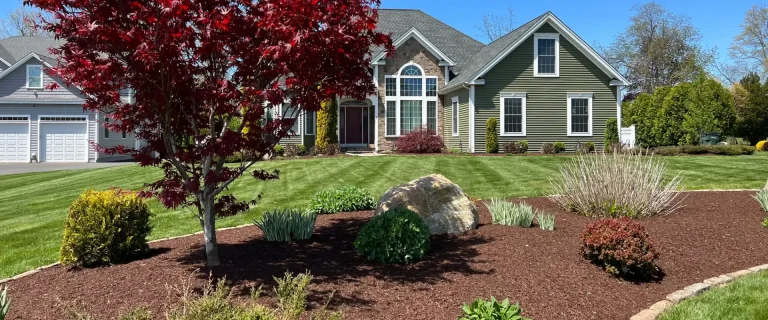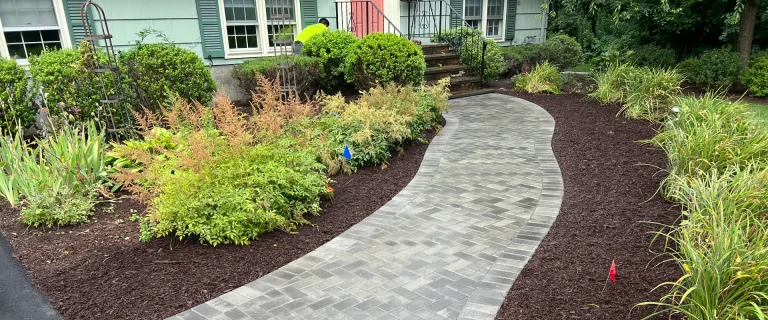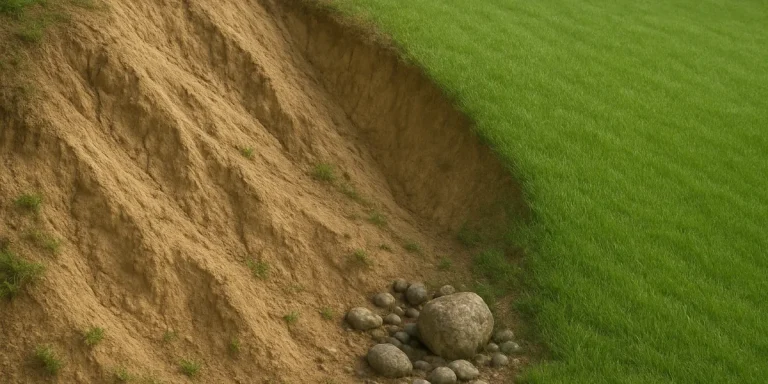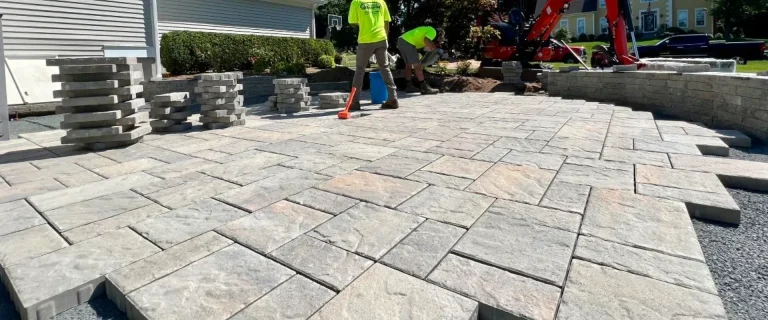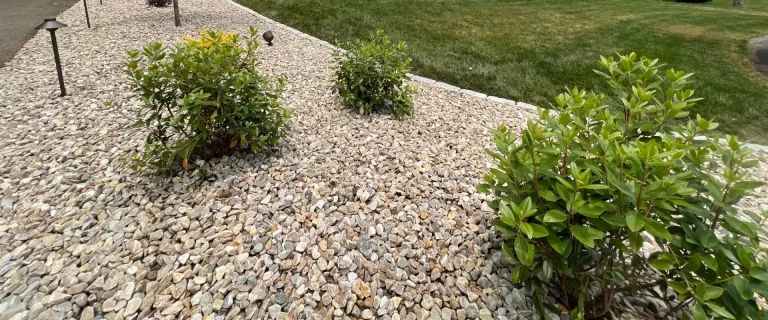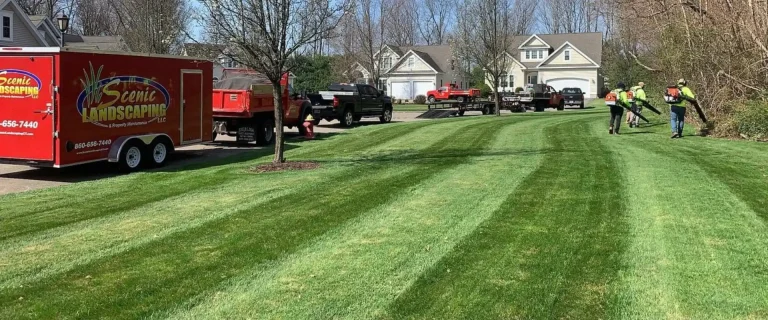Paver Walkway Installation
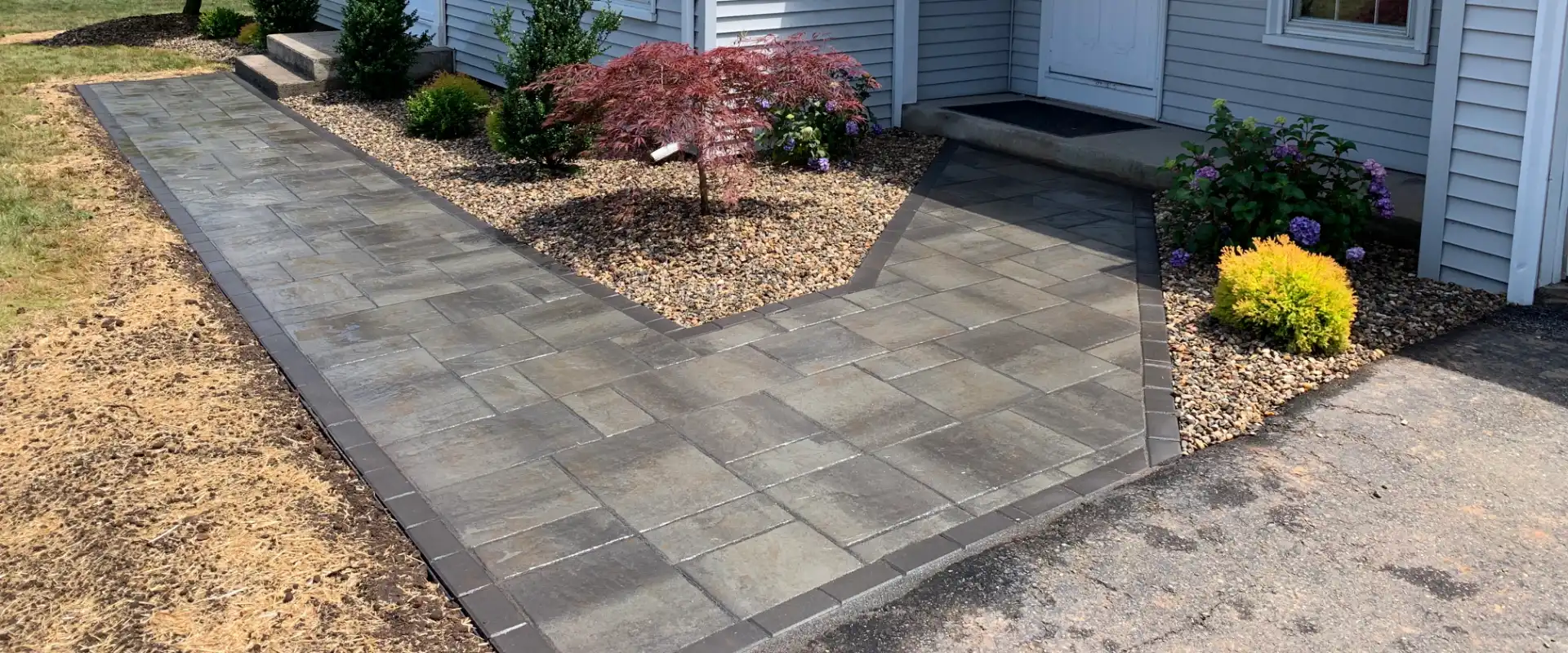
Whether you’re building or renovating a new home, redoing your landscaping, or just want to add something more, look no further than a new paver walkway installation. Paver walkways can add so much to the curb appeal and overall look of your space and make it feel more homey.
Pavers or paving stones are pieces of tile, stone, brick, or brick-like pieces of concrete. They are used as what is essentially outdoor flooring, including walkways and patios.
There are many different kinds of pavers at different price points. For example, you can get cheaper concrete pavers, which are factory-made. Traditional pavers, on the other hand, requires several layers of gravel paver base and sand. There are many different options to choose from and decisions to be made when figuring out your new paver walkway installation.
What Does the Process of Paver Installation Look Like?
Now, if you are a competent DIY-er, you might think you’ve got this handled. If that is the case, try watching the process by Lowe’s or a DIY-er YouTube step-by-step process.
Having seen this process, however, many eager DIY-ers are dissuaded from doing a paver walkway installation themselves. That’s why you should invest in trusted professionals to take on this daunting task.
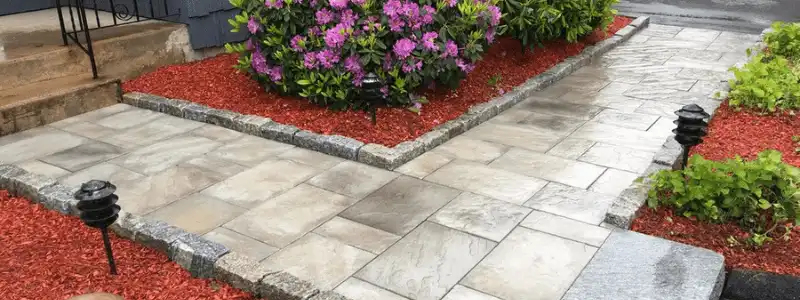
Different Types of Pavers
If you take a walk through any home improvement store, you’ll notice that pavers come in a dizzying array of choices. Shape, size, material, and price are all things you need to consider when selecting the pavers you want. First, let’s consider materials.
As we discussed earlier, pavers may be made out of different things. Paving stones or pavers may be constructed of natural stone, brick, concrete, or synthetic materials. You can even get rubber pavers or travertine pavers that may stand up the wear and tear of your local weather better than alternatives.
The three main types of pavers, though, are natural stone, brick, and concrete. These come in hundreds of styles and colors. The one you choose depends on your budget, where you want to use the pavers, and personal preference.
Natural Stone Pavers
The natural stone used for stone pavers is usually flagstone, fieldstone, or even limestone. Unsurprisingly, natural stone pavers are more expensive than brick or concrete pavers.
Some pros of picking natural stone pavers include:
- More options to choose from
- Adds a warm and personal touch to home landscaping
- Permeable design makes them ideal for water drainage
Meanwhile, some cons include:
- More expensive than alternatives
- Heavier
- Not ideal for areas of heavy traffic, as they can crack and break more easily
Travertine pavers are a popular alternative to natural stone because they hold their natural color. They withstand sun, snow, rain, and other weathering. They seldom need to be cleaned.
Brick Pavers
Next up are brick pavers. Brick pavers are constructed of clay or concrete and aggregate that has been dyed to resemble brick. Brick pavers are a less expensive alternative to stone pavers, but still more expensive than concrete pavers.
Some pros to using brick pavers are:
- They’re strong and durable
- Stain-resistant
- Allow for drainage so long as they’re spaced properly
On the flip side, some cons of using brick pavers are:
- They will fade unless you apply a sealant regularly
- Don’t come in a huge variety of size/color/shape
Concrete Pavers
As the name suggests, concrete pavers are constructed of molded concrete mixed with aggregate. They come in a wide variety of colors and styles. They have the potential for different types of walkway designs and can be dyed to look like stone or brick.
Some pros to using concrete pavers include:
- Durable and strong
- Versatile; they for a variety of walkway designs and styles
- Less expensive than stone and brick
Some cons include:
- They need to be sealed, and re-sealed if there is damage
- Hold water
- Color fades over time
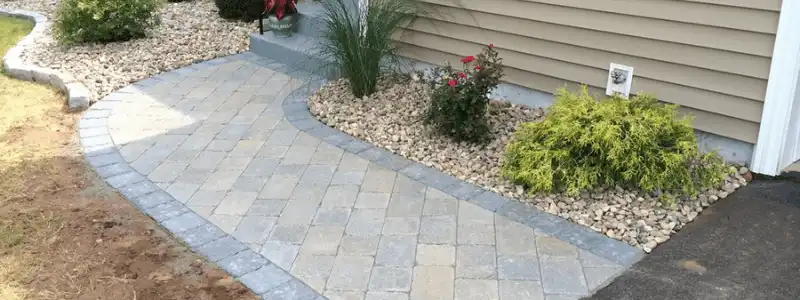
Types of Walkway Styles
Your walkway is limited only by the size of the area and the material you choose. Adding paver walkways can enhance your home’s curb appeal. A walkway can also add to your enjoyment of a garden or lawn.
Stepping Stones
These walkways are a great start for DIY paving stone projects. They involve laying large stones over grass. They may be perfect for a garden or backyard walkway. However, stepping stone walkways can easily become overgrown, and they will damage the earth and grass underneath if you want to remove them.
Patterned Walkways
Stone, brick and concrete pavers can be laid in many different patterns. Just a few examples are herringbone, basket weave, zigzag, or mosaic. Creating a patterned paver walkway is no easy task and is best left to experienced professionals.
Natural Look Walkways
Sometimes, a walkway looks its best when it is slightly less than perfect. Using pavers of various sizes, shapes, colors, and textures. Many people opt for natural look walkways, which still require a great deal of time and expertise to install.
Are Pavers a Good Choice?
You may be asking why you should get a paver walkway rather than one of poured concrete. Poured concrete is more affordable per square foot than paver walkways. Even though the upfront cost of pavers is higher, they offer greater value and durability than either poured concrete or stamped concrete. They are also far more aesthetically pleasing than poured concrete walkways.
Paver walkways can be very expensive, but if you use the right materials and make good use of your space, they can be very affordable. Talk to a professional about getting the right pavers and picking the best design to stick within your budget.
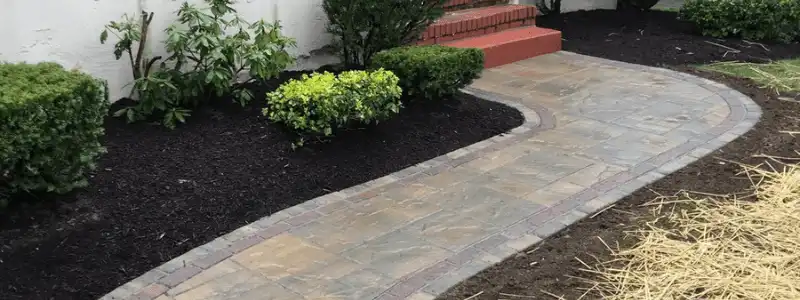
Maintaining Paver Walkways
Consideration must be given to the maintenance of your walkway. Pavers are relatively maintenance-free, depending on the material you’ve decided to use. Some require sealing and/or regular cleaning. This improves their appearance and longevity. A pressure wash from time to time will accomplish this.
Sealing minimizes staining, fading and increases the life of your paver walkway. This should be a consideration when you are choosing paver materials.
Concrete pavers need to be sealed every two years—especially in high-traffic areas or where water accumulates.
Clay pavers don’t need sealant unless they come in contact with grease or oil—like around the barbecue.
Brick pavers need only a water wash with a small amount of multipurpose outdoor cleaner, or simply a stiff-bristled broom to wash away dirt.
Stone pavers may crack. These can be repaired or replaced.
How Can Scenic Landscaping Help?
When it comes to paver walkway installation, Scenic Landscape has a breadth of experience. By now, you know that there is an art to paver walkway installation, and Scenic Landscaping will be sure to make your new walkway a true work of art.
Scenic Landscaping can help you decide on size, style, and material for your walkway that fits your specific needs and your budget.
To discuss what paver walkway style would best suit your needs or to book a free estimate, contact Scenic Landscaping today.

